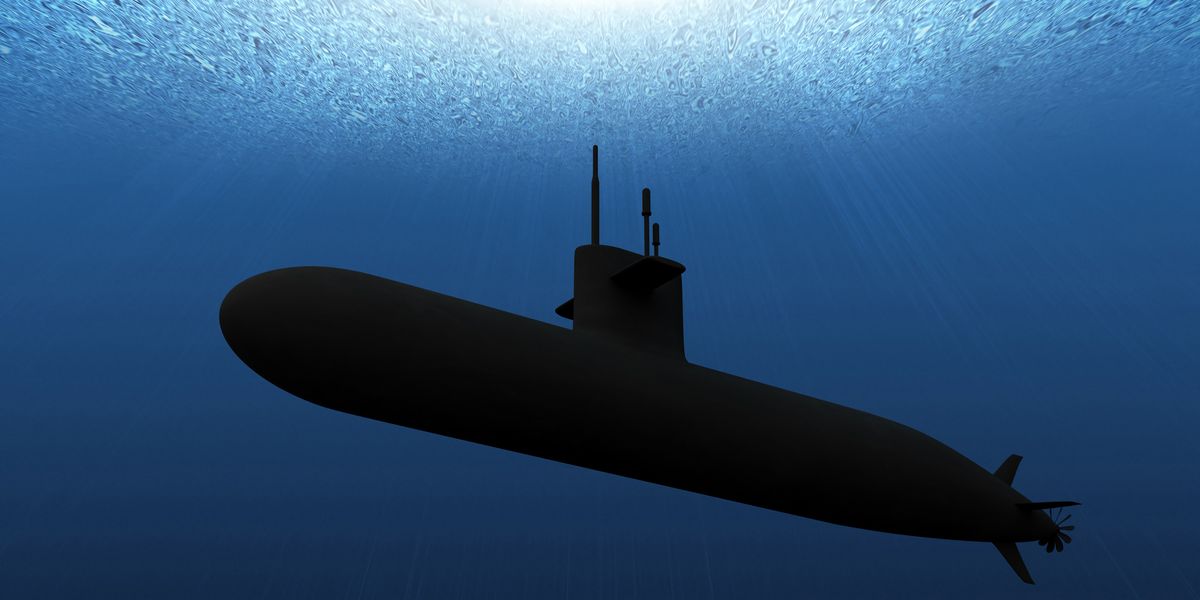China is on a mission to become the world’s dominant superpower by 2049. That goal is driving a desire to build a world-class navy that can challenge the United States. To make it even stronger, according to Stephen Chen of the South China Morning Post, scientists from Shanghai Jiao Tong University have created a new detection system that they claim can track submarines better than any other existing technology. This indirect, electromagnetic (EM) signal tracking approach will perceive the faintest of signals from rival submarines. If that happens, It will be tougher for submarines to stay hidden from attack.
The device is reportedly the size of a pickup truck, and the team tested it on a deep ocean seabed in the South China Sea, the September 2024 story reports. Submarines generally detect other submarines using sonar, which emits sound waves and analyzes the echoes that reflect from underwater objects. However, this detector doesn’t use sonar. Rather, it depends on an antenna that detects low-frequency EM waves that submarine propellers generate with each rotation. When the waves make contact with the seabed, they continue moving through the rock. They don’t weaken nearly as fast in the seabed as they do in seawater, so detection is easier at farther ranges.
Rather than seeking out propeller sound waves directly—a challenge as the waves deteriorate fast in seawater—the new Chinese detector locates and analyzes EM waves from the seabed. Marine geologists already use this low-frequency detection method to find oil and gas deposits, but this is the first time this technique is being used for submarine detection.
To make a more sensitive detector, the team created an algorithm that differentiates between submarine signals and passing sea life. So far, it has succeeded in detecting surface ships, 1.86 miles away. Researchers were able to track the wakes of passing vessels and analyze those wakes to determine what kinds of ships they were.
Until now, the furthest detection of submarines using similar technology has been slightly more than 1.5 miles, also in China. However, scientists on the new detection project claim that their system could be developed further, to detect faint EM signals from submarines more than 31 miles away. Since the underlying method relies on very faint signals, establishing this range means the science team will need to integrate multiple high-precision sensors that are scattered over a 0.62-mile area. And the sensors must be synchronized within an error margin a billionth of a second, according to the South China Morning Post report on the scientists’ paper.
Should this detection system reach that goal, it will help China’s submarines potentially find and threaten U.S. submarines at farther distances than currently possible. As a result, the U.S. would need to keep their own submarines away from a battle in places like the South China Sea or Taiwan Strait, places where China is showing aggression with its current military presence.
China is working assiduously to create various anti-submarine systems, in an effort Beijing calls the “Underwater Great Wall.” Its detection methods are sophisticated and growing more complex with each year. In 2023 Chinese scientists, writing in the Chinese-language journal Cryogenics & Superconductivity, revealed their advancements with Superconducting Quantum Interference Devices (SQUIDs). These “measure extremely weak magnetic fields” and help make it nearly impossible for a U.S. submarine to slip by unnoticed. While China doesn’t actually have this technology at present, SQUIDS could radically improve submarine detection in the future.
Another technology China has developed is laser-equipped satellites that can detect submarines operating deep beneath the ocean, as far as 525 feet. Similarly, China has floated thousands of sensor-equipped balloons that hover silently above the South China Sea, tracking the wakes of vessels passing through that heavily trafficked region.
Like SQUIDS, a fully realized low-frequency detector could be a game-changer for China, and this ongoing research may mean it’s closer to being deployed.
Brandon J. Weichert, a National Interest national security analyst, is a former Congressional staffer and geopolitical analyst who is a contributor at The Washington Times, the Asia Times, and The-Pipeline. He is the author of Winning Space: How America Remains a Superpower, Biohacked: China’s Race to Control Life, and The Shadow War: Iran’s Quest for Supremacy. Weichert travels the country serving as a consultant for various military and academic institutions as well as tech firms. His newest book, A Disaster of Our Own Making: How the West Lost Ukraine, is available for purchase wherever books are sold.


